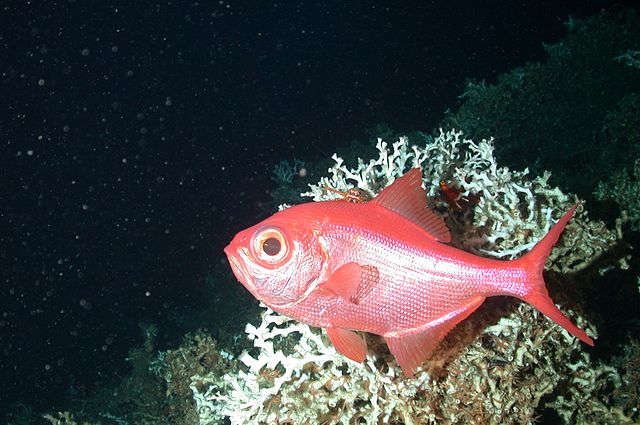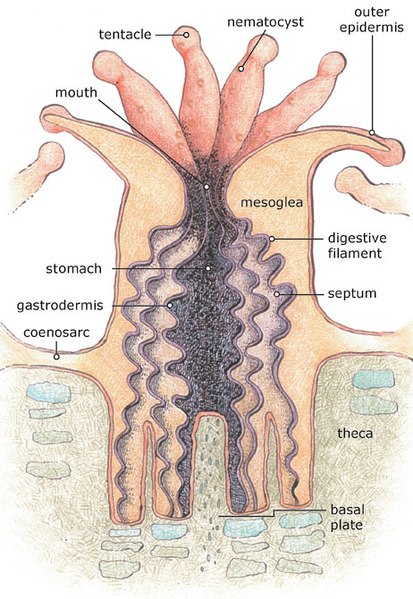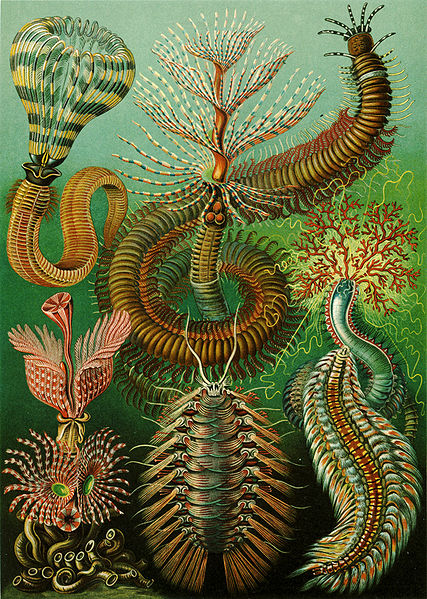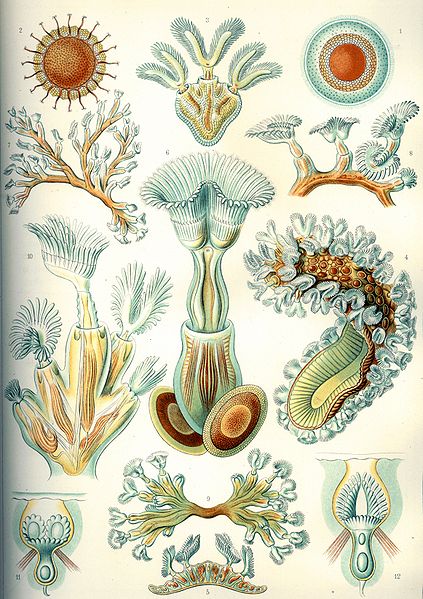Anthozoa is a class of marine invertebrates which includes the sea anemones, stony corals and soft corals. Adult anthozoans are almost all attached to the seabed, while their larvae can disperse as part of the plankton. The basic unit of the adult is the polyp; this consists of a cylindrical column topped by a disc with a central mouth surrounded by tentacles. Sea anemones are mostly solitary, but the majority of corals are colonial, being formed by the budding of new polyps from an original, founding individual. Colonies are strengthened by calcium carbonate and other materials and take various massive, plate-like, bushy or leafy forms.
Image: Coral Outcrop Flynn Reef
Image: Reef 2095 Flickr NOAA Photo Library
Deep water corals serve as habitats for fish such as the alfonsino
Anatomy of a stony coral polyp
Marine invertebrates are the invertebrates that live in marine habitats. Invertebrate is a blanket term that includes all animals apart from the vertebrate members of the chordate phylum. Invertebrates lack a vertebral column, and some have evolved a shell or a hard exoskeleton. As on land and in the air, marine invertebrates have a large variety of body plans, and have been categorised into over 30 phyla. They make up most of the macroscopic life in the oceans.
Ernst Haeckel's 96th plate, showing some marine invertebrates. Marine invertebrates have a large variety of body plans, which are currently categorised into over 30 phyla.
Dickinsonia may be the earliest animal. They appear in the fossil record 571 million to 541 million years ago.
Kimberella, an early mollusc important for understanding the Cambrian explosion. Invertebrates are grouped into different phyla (body plans).
Bryozoa, from Ernst Haeckel's Kunstformen der Natur, 1904








